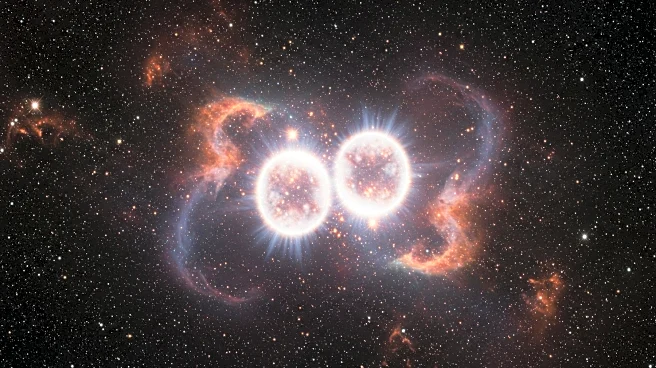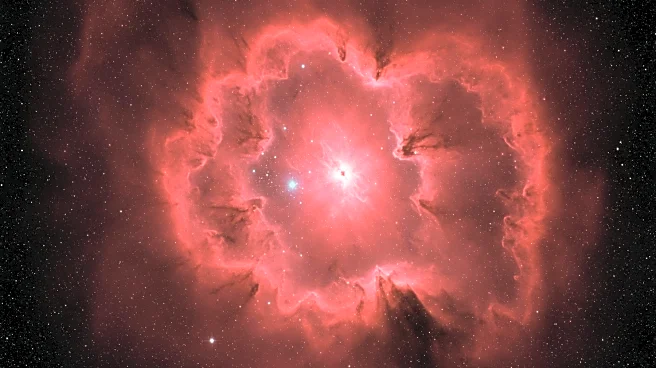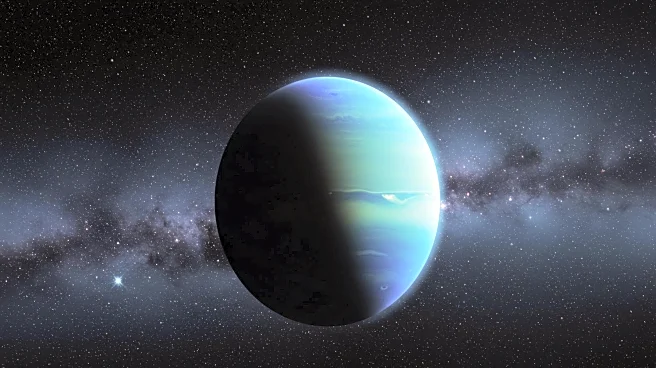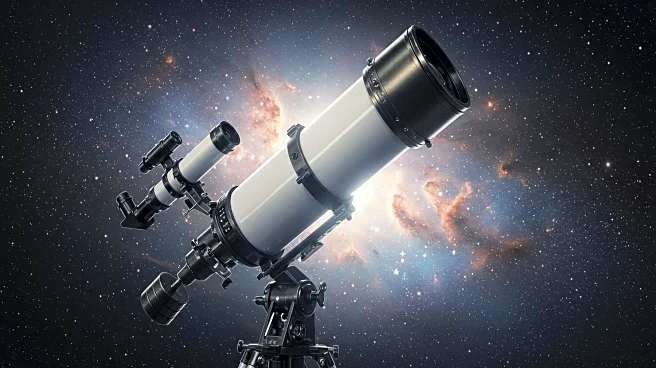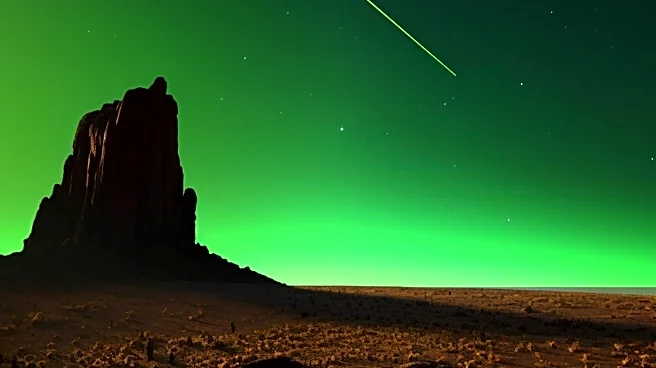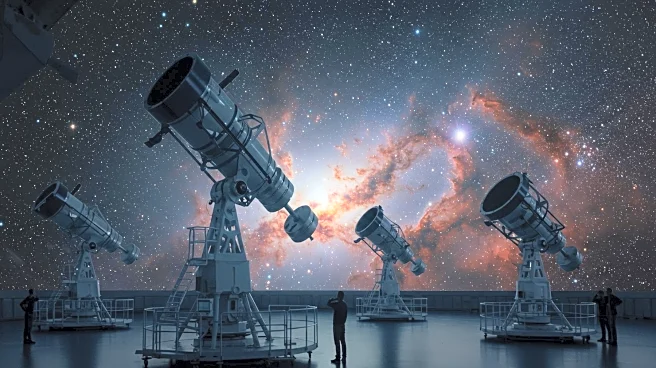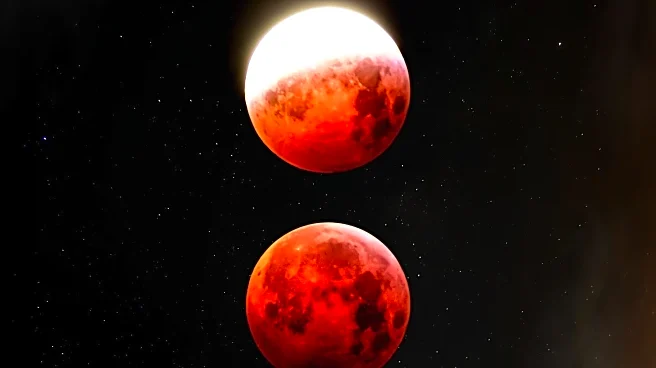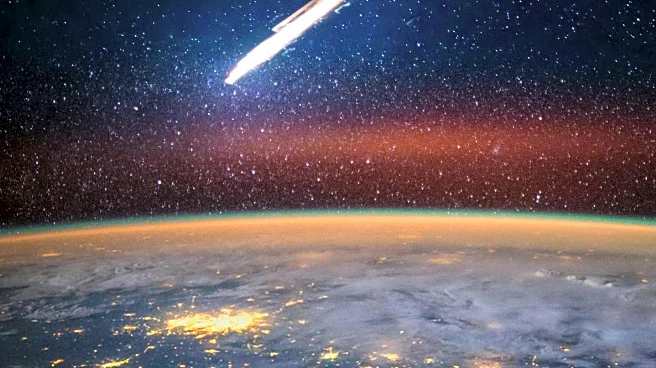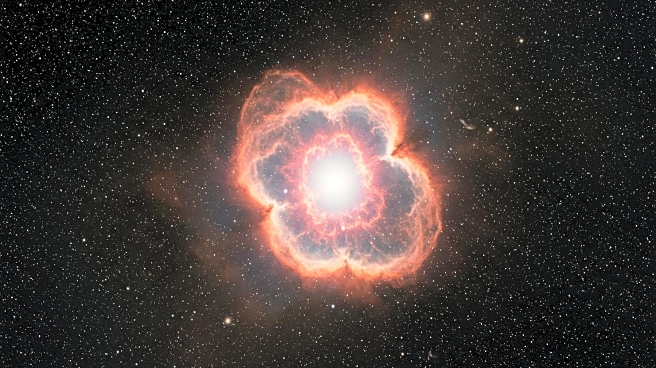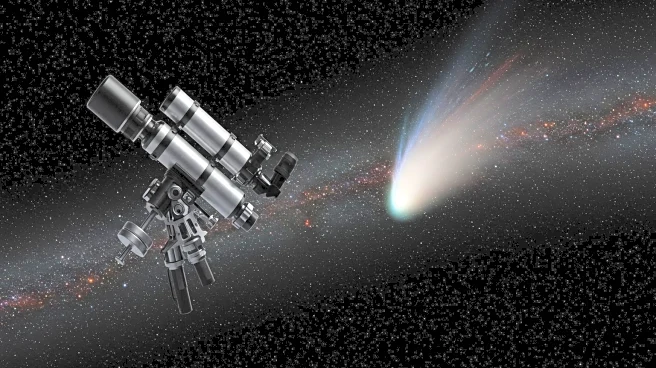What is the story about?
What's Happening?
NASA's Hubble Space Telescope has uncovered a rare cosmic phenomenon: an ultra-massive white dwarf star formed from the merger of two stars. This discovery challenges previous assumptions about white dwarf formation, suggesting that such mergers may be more common than previously thought. The star, identified as WD 0525+526, is located 128 light-years away and is 20% more massive than the Sun. Hubble's ultraviolet observations revealed carbon in the star's atmosphere, indicating a violent origin through stellar collision.
Why It's Important?
This discovery provides new insights into the formation and evolution of white dwarfs, which are the remnants of stars that have exhausted their nuclear fuel. Understanding these processes is crucial for astronomers studying the lifecycle of stars and the dynamics of binary systems. The findings may also have implications for the study of supernovae, as white dwarf mergers can lead to such explosive events. The research highlights the capabilities of the Hubble Space Telescope in advancing our knowledge of the universe.
What's Next?
Astronomers plan to extend their research to explore the prevalence of carbon white dwarfs among similar stars, aiming to identify more merger remnants. This could enhance understanding of white dwarf binaries and their role in stellar evolution. The ongoing study will contribute to the broader field of astrophysics, potentially uncovering new pathways to supernova explosions and refining models of star formation.
AI Generated Content
Do you find this article useful?
